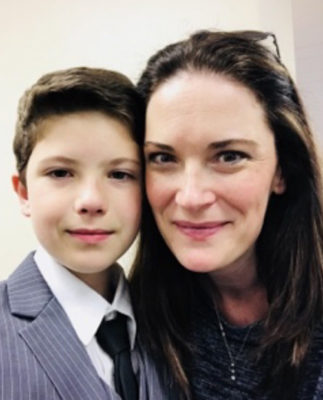Should my Fatty Lipoma be Excised?

I have a lipoma. Lipomas are fatty tissue, benign noncancerous tumors. My lipoma is a typical small, soft, rubbery lump like a rubber ball just beneath the surface of my skin. It moves slightly to the touch. It doesn’t hurt, but is on the inside of my thigh and visible in shorts or a swimming suit.
My DOC surgeon explained that lipomas are usually on the upper thighs, upper back, shoulders, arms, and buttocks. Lipomas occur at any age, but often between the ages of 40 and 60 and more in men than women. It is possible to have more than one lipoma. Lipomas typically do not change after they form, and have very little potential for becoming cancerous. They often require no treatment other than observation.
All lipomas are made up of fat, but there are sub-types of different types of fat other than white fat, fat combined with fibrous tissue, blood vessels, or blood cells. Some of the sub-types are painful. Some sub-types appear to have a genetic defect that may be inherited from family members. No one but me has a lipoma in my family. Some doctors think that lipomas occur more often in inactive people. I workout every day.
If a lipoma is painful or grows larger, it is possible to have it removed with a simple excision procedure. My lipoma did not hurt or grow. However, I went to DOC because at the time I didn’t know if the lump on my leg was something that needed attention.
The DOC surgeon talked to me about my about general health, how long the mass has been there and any symptoms such as pain associated with the lipoma. The doctor felt the mass, checked its size, consistency, and mobility, and examined the skin overlying the mass.
Lipomas are usually diagnosed based on history and physical examination. A CT scan shows fatty mass to confirm the diagnosis and an MRI shows the best images of soft tissues from all perspectives. A biopsy is sometimes necessary to confirm the diagnosis of lipoma. A tissue sample of the tumor is taken and examined under a microscope. The tissue exam differentiates a lipoma from liposarcoma, which is cancerous. They usually grow quickly and are painful. I did not need scans or a biopsy to confirm the DOC diagnosis.
Since my annoying thigh lipoma is a benign tumor, no treatment was an option, but my DOC doctor emphasized the need to monitor changes in the tumor.
The only treatment that completely removes a lipoma is the surgical procedure, excision. Large or deep lipomas may require a more comprehensive approach. If I had the excision, I would have a few stitches and be able to go home soon after the procedure. It is unusual for a lipoma to grow back, but if it does recur, excision is the best option. I still have my lipoma. If it ever hurts or grows, I will go to my closest DOC and get that fatty ball in my thigh removed. For now, I just wear longer shorts.
For more information on the cost of care, click here.



